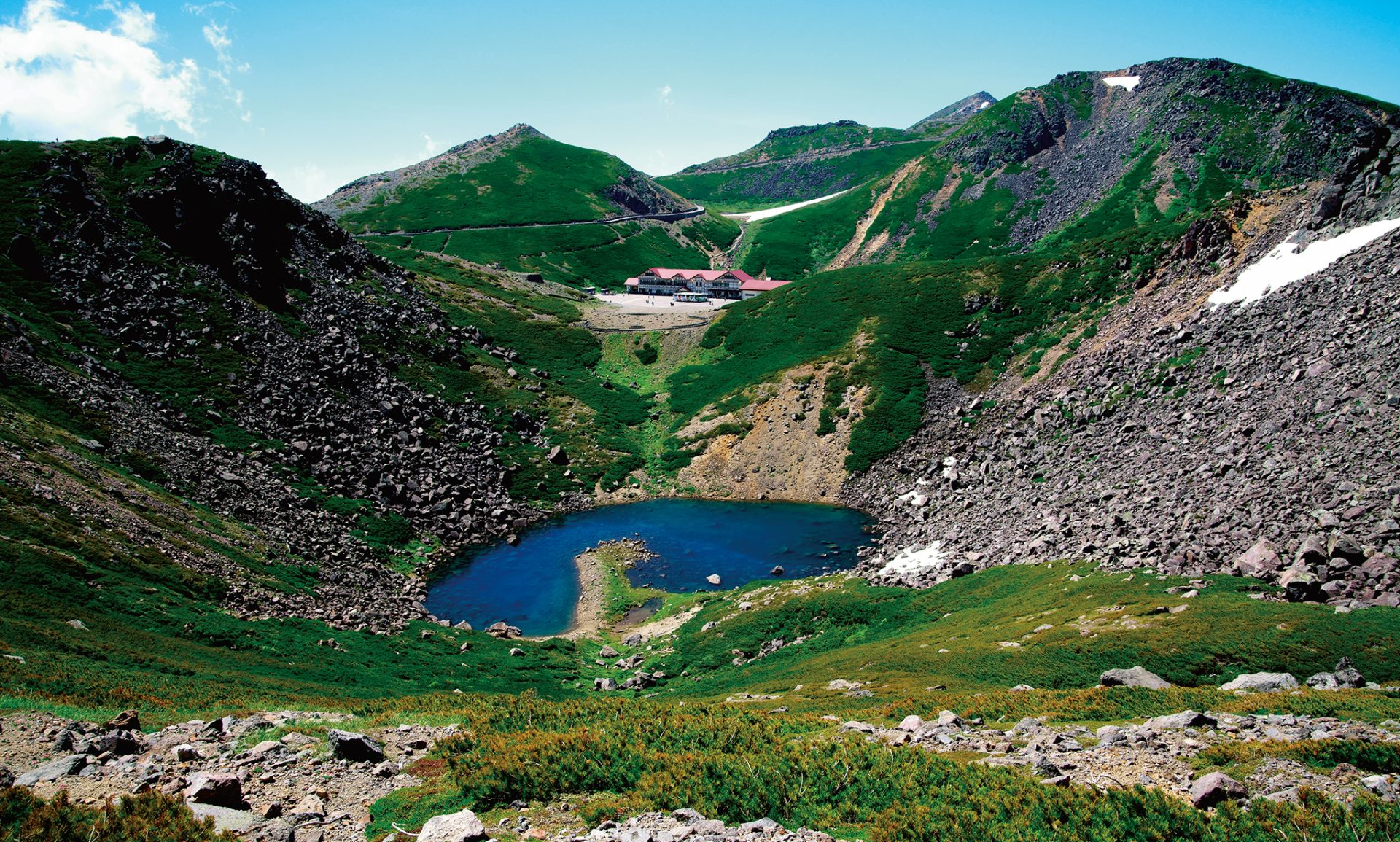【CONTENTS】Norikura Volcano Formation

The Norikura Volcanic Chain, including active volcanoes, lies in the Northern Alps. These volcanoes are located on the slopes that stretch north and south along the mountain range, and because their basements were originally at a high elevation, they are sometimes called raised-bottom volcanoes. Giant volcanic bodies, such as the Ontake and Norikura Volcanoes, also hide already highly elevated basements within them. The highest point of the Norikura Volcano is Ken-gamine (3026 m), but the basement exposure reaches an elevation of 2400 meters (Yukawa basin). Why did volcanoes form at such a high elevation? We can assume that it is because the mountain range, which is in a location where magma has risen, is buoyed by lower density magma than what surrounds it, and it has gained elevation through reverse faulting, which causes upward motion.


Kame-gaike pond, Tatami-daira, and Ken-gamine peak viewed from Mt. Mao-dake. Kame-gaike pond is thought to be the Ebisu Volcano Crater which was formed by volcanic ash eruption about 2000 years ago. It is said to be the most recent crater in Norikura Volcano.

The Norikura Mountains are one of the few independent chain of peaks in the Northern Alps. Though it is called an independent peak, there are 23 peaks that stretch across the volcanic body from north to south. Its volcanic activity is divided into the older phase (1.2 million – 900 thou-sand years ago) and newer phase (from 320 thousand years ago) with a long period of dormancy in between.

Zengoro Waterfall: The Norikura Mountains feature the diverse natural scenery that can only be found in volcanic terrain. The countless waterfalls deliver water from melted snow to the foothills. Most of the waterfalls were formed near the ends and along the sides of lava flows.
The history of activity of the Norikura Volcano and volcano Subdivision
The Norikura Volcanoes can be broadly divided into the newer and older phases. The older Norikura Volcano is the Sencho Volcano, which sprawls widely in the southwest, and it can also be further divided into two phases, the first 1.28 – 1.25 million years ago and the second 920 – 860 thousand years ago. The newer phase Norikura Volcanoes are volcanoes created by volcanic activity 320 thousand years ago and later, and they can be divided into the Eboshi Volcano, Yotsu-dake Volcano, Ebisu Volcano, and Gongen-ike/ Takama-gahara Volcano (Figure 2). There were more than 500 thousand years of dormancy between the older and newer active phases, and they are considered different volcanoes; the older phase Norikura Volcano and newer phase Norikura Volcano, rather than a single series of volcanic activity. Although the old and new Norikura Volcanoes were active at different times, their ejecta are mainly lava, and pyrociastic flow deposits and volcanic ash are scarce. This is a characteristic that distinguish them from the Ontake Volcano, which belongs to the same volcanic chain. Another common feature is that the volcano ejecta are mainly andesite and dacite rocks, in addition to the fact that both the older and new eruption centers are located along the present-day north-to-south spine section. From the eruption center, which stretches 5 km to the north and south, lava flows east and west and to the south, with the longest lava flow, Bandokoro Lava, which flows to the Norikura Highland, reaching 15 km in length. The most recent lava flow is the Iwaidani Lava, which flowed to the west from the Gongen-ike Crater approximately 9000 years ago, and many landforms, such as lava levee, still exist. In addition, volcanic ash erupted from the Ebisu Crater approximately 2000 years ago, and the Norikura Volcano is recognized as an active volcano.